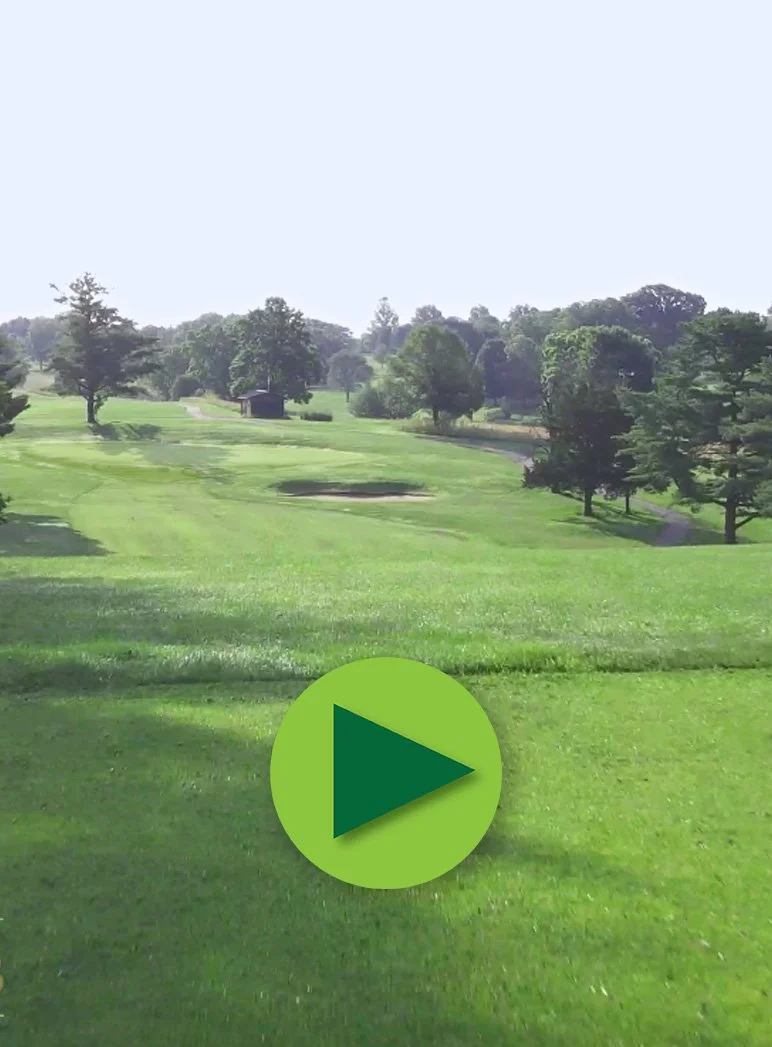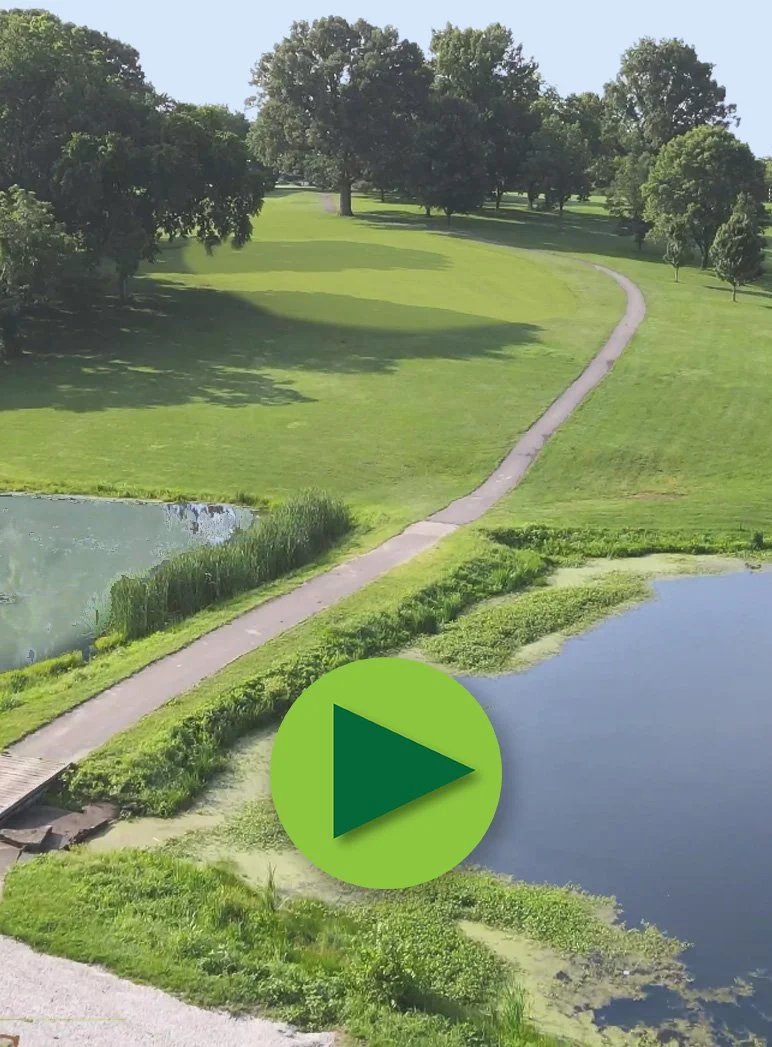THE WOODFORD CLUB AERIAL VIDEO VIEW OF THE BACK 9
The back nine opens with a welcoming par 5 that offers players a real chance to get off to a strong start. A straight tee shot sets the tone, positioning you perfectly for a second shot that crests the hill and rolls downhill toward the green. Long hitters may even eye an eagle opportunity, but it’s a hole that rewards smart play as much as distance. The green slopes noticeably from back to front, so staying below the hole will give you the best look at birdie—and help avoid a slippery downhill putt.
Arguably the most stunning hole on the course, Hole 13 is a par 3 that combines natural beauty with just the right amount of risk. The elevated tee offers a dramatic view of your shot over the lake to a generous, receptive green. It’s a true test of distance control—come up short and you're in the water; go long and you’ll face a tough chip from the slope behind. The green’s size makes it an inviting target, and finding it off the tee sets the stage for a memorable birdie—or at least a very satisfying par.
Hole 16 is a thinking player’s par 4 with a slight dogleg right and dramatic elevation changes. Most players will want to leave the driver in the bag and opt for a well-placed tee shot that finds the bottom of the hill. From there, the hole climbs steeply to a raised green that’s well-guarded in front. Distance control and trajectory are key on the approach—anything short can get swallowed up before reaching the putting surface. Play it smart, and you’ll have a real shot at birdie.
Don’t let the beauty of this par 3 fool you—Hole 11 is as tricky as it is picturesque. A well-struck tee shot is a must here. Miss too far left and you're out of bounds; push it too far right and you'll find yourself tumbling down a slope into a bunker or thick rough beyond. But find the green off the tee, and you'll be in prime position to card a solid par—or better.
The toughest test on the back nine—and the number one handicap hole—Hole 14 is a long, demanding par 4 that requires both accuracy and discipline. A solid tee shot into the fairway is essential. Miss right and you’re tangled in trees; miss left and you’re dealing with tall grass or even out of bounds. Most players will face a long second shot into a modestly sized green that doesn’t offer many favors. It’s a hole that punishes greed and rewards smart, steady play. Make a par here, and you’ve truly earned it.
One of The Woodford Club’s most scenic holes, this par 5 runs alongside a picturesque horse farm—don’t be surprised if a few curious thoroughbreds line up at the fence to watch your swing. A well-placed tee shot is key, avoiding the bunker on the right side of the fairway. From there, long hitters may eye the green, which sits dramatically downhill, for a chance at reaching in two. For most, a solid second shot to the landing area sets up a manageable, slightly uphill approach. With a few straight swings, this hole presents a real scoring opportunity—and a memorable view to go with it.
Hole 12 delivers a visual test right from the tee box. The fairway appears narrow, but there’s more room than meets the eye—especially if you can shape a left-to-right shot off the tee. Big hitters may try to fly the trees on the right for a shortcut, but most players will face a blind approach into the green. Use the poles behind the green—part of the driving range netting—as your guide to the flag. The green itself is one of the trickiest on the course, with subtle breaks and quick speeds. For a hole that’s not long on the card, walking away with a par feels like a small victory.
Don’t let the straightforward look of this par 3 fool you—Hole 15 is a shotmaker’s test. The green is well-protected by bunkers in front and on both sides, demanding a precise tee shot if you want a clean look at birdie. Miss the mark, and you’ll need to lean on your short game to save par. It may not be long, but this little gem packs plenty of challenge into its yardage.
The closing hole at The Woodford Club is a beauty—and a bit of a puzzle. From an elevated tee, players launch their drive over the lake below to an equally elevated fairway. But the real challenge lies in the approach: a tall, menacing tree guards the right side, making any angle from that side a tough ask. The ideal drive hugs the left edge of the fairway, setting up a clean look at the green. It’s not a long hole, so birdie is definitely in play—but only if you play it smart. A memorable finish to a memorable back nine.










